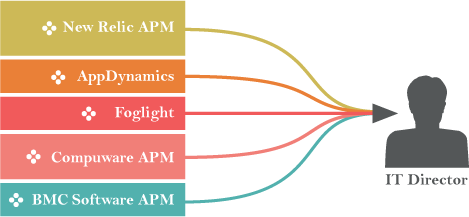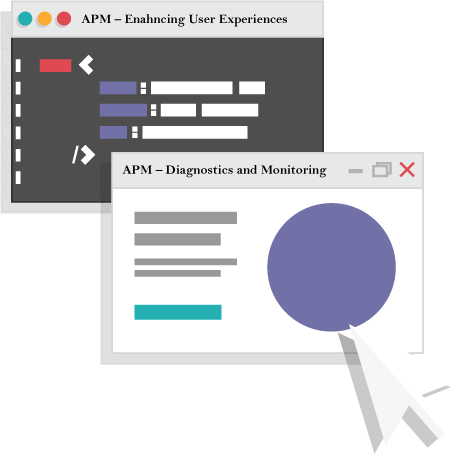Modern businesses require modern solutions. Applications have moved from being primarily used for back-office tasks, such as payroll, to the forefront of almost every business. The latest application performance management, or APM, tools are designed to automate diagnostic and action recommendations, which allow IT professionals to shift their focus on the growing technological demands of modern businesses.
The following 5 application performance management tools are designed to save you time from having to constantly monitor and analyze data to keep all applications running at an optimum pace.
New Relic APM
New Relic APM offers an intuitive interface to swiftly access and begin monitoring all applications. When installed, New Relic AMP provides immediate insights into application performance in a simple and user-friendly format. It operates by collecting data based on customizeable parameters, which means you only see the data that’s most important to your business.
Some of the most notable features include:
- At-a-glance performance monitoring
- Browsing monitoring to provide insights regarding different user experiences
- SQL tracking to showcase what statements are responsible for slowing user experiences
- Critical business transaction monitoring
You can visit NewRelic by going to newrelic.com
AppDynamics
Regarded as an all-inclusive application management platform, AppDynamics continually monitors application behavior and performance. Upon inspection, AppDynamics is able to create customized insights regarding how the performance of your various applications impacts the operations of the entire site, and ultimately business operations. If you wish to have further transparency and knowledge of how each application is affecting the performance and user experience of your business, AppDynamics may be your ideal choice.
Notable features include:
- Code-level performance diagnosis and problem solving
- Entire application stacks visualization and monitoring
- Dynamic and conclusive performance flow maps
- Real-time performance and business metrics
- Customized extensions to integrate into third-party tools and platforms
Check out AppDynamics at appdynamics.com.
Foglight
Does your business deal with multiple coding languages while simultaneously handling a combination of physical and virtual services? The more complex a business structure and digital implementation, the greater the need for a well-rounded and conclusive application performance management tool. Foglight effectively manages the performance of various applications, and application languages, to offer detailed insight into how applications are not only affecting user experience, but how its operation is affecting the business.
Features Include:
- Highly detailed UX perspectives through an intuitive user experience platform
- Database monitoring and managing from a single platform
- Digital infrastructure monitoring based on multiple perspectives (user, client, business, etc.)
- Web-based and custom application monitoring
- Employee productivity application monitoring
- Automatic collection and monitoring of user incidents
Visit quest.com/foglight to determine if its services are ideal for the IT environment of your business.
Compuware APM
It’s no secret the modern application landscape is ever-evolving in its complexity and abilities. While this progression means further control and advanced UI/UX platforms, it also means IT directors are facing new and increasingly challenging scenarios. Compuware APM is an all-inclusive solution designed to meet these demands by incorporating a wide array of products and services into its APM tools. By allowing customers to choose a custom solution, you’ll receive comprehensive APM capability without weighing down your servers and desktop with erroneous tools.
Features Include:
- End-to-end base-level monitoring
- Production, development and testing tools
- In-depth user-experience monitoring and analysis
- Real-time and synthetic enterprise application monitoring
- Cloud-based application monitoring for private, public or combination cloud applications
You can visit Compuware (Gomez) at www.compuware.com.
BMC Software APM
Regarded as the “APM for everyone,” BMC Software APM offers a fully comprehensive medium for monitoring, diagnosing and correcting application performance. Users may gain insights ranging from end-user experience to code-level diagnostics for ultimate control of front-end and back-end applications. Known throughout the IT community as one of the most powerful tools for implementing solutions and identifying the root cause of failures, this APM tool has made its way into the arsenal of many companies.
Features Include:
- Potential error alerts, which alerts administrators before issue impact user experiences
- Catalogue and inform administrators of intermittent and general application slowdowns
- Minute-by-minute performance analysis
- SQL statement monitoring
- Application error isolation
- Code-level performance monitoring, diagnosing and correcting
Contact BMC by visiting bmc.com to discover if their APM solutions work for you and your business.
There are other providers as well that specialize in certain things, and an honorable mention goes out to Dotcom-Monitor, and Keynote as being companies that also offer good quality solutions.


